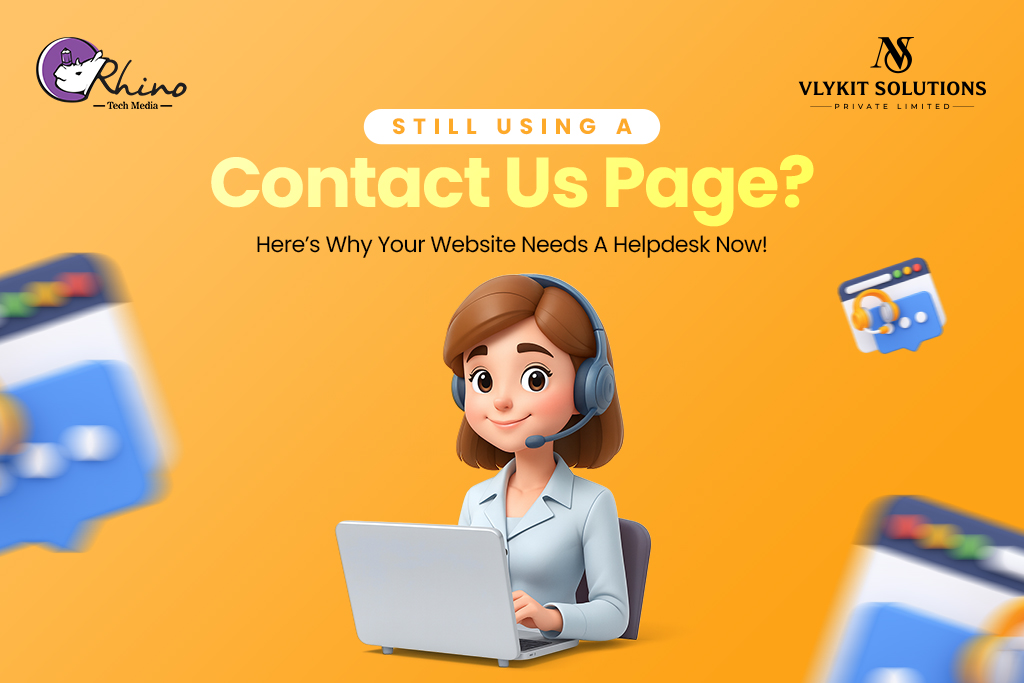In 2025, having a website is no longer optional for businesses, it’s essential. But simply having a website isn’t enough. If you’re promoting a product or service and don’t have a Website Helpdesk, you’re leaving customers confused, frustrated, and ready to bounce to a competitor.
Whether you’re a new website owner or a seasoned business leader, this guide will show you exactly why a helpdesk isn’t just a “nice-to-have”, it’s the backbone of online customer experience.
Let’s break it down.
What Is A Website Helpdesk, Really?
A website helpdesk is a digital support system embedded in your website that helps you manage customer inquiries, resolve issues, track tickets, and offer real-time support.
It typically includes features like:
- Live chat or chatbot integration
- Ticket submission and tracking
- FAQs and knowledge base access
- Email or WhatsApp support integration
- Automated replies and escalation systems
Think of it as your virtual customer care team, available 24/7, no matter your time zone, office hours, or staffing.
Why A “Contact Us” Page Is No Longer Enough
Let’s be honest, how many emails do you reply to from your contact form? And how long does it take?
Today’s consumers expect instant answers, not a “We’ll get back to you in 2-3 business days” response.
A static contact page:
- Feels outdated
- Offers zero transparency on resolution timelines
- Can’t organize or prioritize issues
- Doesn’t help returning customers who want updates
And in the age of Amazon-like responsiveness, that’s a serious UX failure.
The Hidden Cost Of Not Having A Helpdesk
Businesses often underestimate the silent damage caused by weak customer support infrastructure. Here’s what you’re risking:
1. High Bounce Rates
If a visitor can’t get an answer fast, they’ll exit your site. A helpdesk provides live answers, FAQs, or chatbot flows that reduce exit rates significantly.
2. Negative Brand Perception
Lack of support = lack of professionalism. It tells potential customers you don’t care about post-purchase experience.
3. Lost Sales Opportunities
A visitor might be one question away from buying. Without live chat or real-time support, that opportunity vanishes.
4. Poor SEO & Google Rankings
Google considers bounce rates and engagement when ranking sites. An unresolved query leads to fast exits and that’s bad news for your rankings.
The Benefits Of A Website Helpdesk (With Real Business Impact)
1. Better Customer Experience = Higher Conversions
Providing real-time support during the buyer’s journey builds trust, eliminates doubts, and nudges them toward conversion.
2. 24/7 Support (Without 24/7 Staff)
With automated helpdesks or chatbot integrations, your site stays “online” even when your team sleeps.
3. Organized Ticketing System
A helpdesk helps you prioritize critical issues, assign tickets to the right team, and track resolution progress.
4. Data-Driven Insights
You’ll learn what customers ask most, what frustrates them, and where your site or service can improve, all from support analytics.
5. Brand Loyalty & Repeat Customers
Customers love brands that care. A responsive helpdesk turns a simple query into a long-term relationship.
Helpdesk Tools You Can Use (For All Budgets)
Whether you’re a solopreneur or a growing enterprise, here are tools that fit every scale:
| Tool | Best For | Key Features |
| Zendesk | Large teams | Ticketing, live chat, automation |
| Freshdesk | SMEs | Email support, automation, AI chat |
| Tawk.to | Free live chat | Real-time support, mobile apps |
| HubSpot Service Hub | CRM integration | Helpdesk, Knowledge Base, tickets |
| Zoho Desk | Growing businesses | Multi-channel support, SLA tracking |
Helpdesk Use Cases By Industry
Still not convinced? Here’s how a helpdesk benefits different types of businesses:
- E-Commerce Sites: Handle product queries, delivery issues, returns, and post-purchase concerns in real-time.
- Service Providers: Bookings, feedback, support requests, or project updates, all organized and accessible.
- SaaS Startups: Onboard users, provide product walkthroughs, and fix bugs faster with ticket support.
- Local Businesses: Answer store hours, location questions, or service availability via quick chat.
- Healthcare/Clinics: Schedule appointments, manage queries, send reports securely through support systems.
What About Old-School Businesses?
If you’ve been running your website for years and never felt the need for a helpdesk, that’s exactly the problem.
Digital behaviour has changed. In 2025, customers don’t want to call. They want fast, self-serve support.
Businesses that failed to adapt are:
- Missing online leads
- Generating poor word-of-mouth
- Falling behind competitors offering seamless support
But the good news? It’s not too late to upgrade.
Where To Start: Setting Up Your First Helpdesk
- Choose a tool: Start simple with something like Tawk.to or Freshdesk.
- Embed the widget: Most tools offer copy-paste code to plug into your site.
- Set up FAQs: Reduce basic inquiries by uploading helpful articles.
- Assign responsibilities: Make sure someone is monitoring responses.
- Automate what you can: Set autoresponders, chatbot flows, and escalation rules.
A Helpdesk Isn’t Just Support, It’s Marketing
Here’s what most people miss: your helpdesk isn’t just a support tool, it’s also a sales and branding tool.
- Happy customers refer more customers
- Fast support boosts positive reviews
- Reduced friction = more conversions
- Ticket data = content ideas and feature updates
In short, it’s the most underrated growth tool hiding in plain sight.
Final Thoughts
In today’s hyper-competitive digital world, every click counts. And if your website doesn’t guide, support, and serve your visitor immediately, they won’t stick around.
A website helpdesk ensures you’re not just present online, but present and responsive.
Whether you’re just launching your site or rethinking an old one, this is the upgrade that’ll pay for itself in trust, traffic, and transactions.
Want help setting up the right helpdesk system for your website?
Reach out to Rhino Creative Agency — we’ll get you sorted, supported, and scalable.

